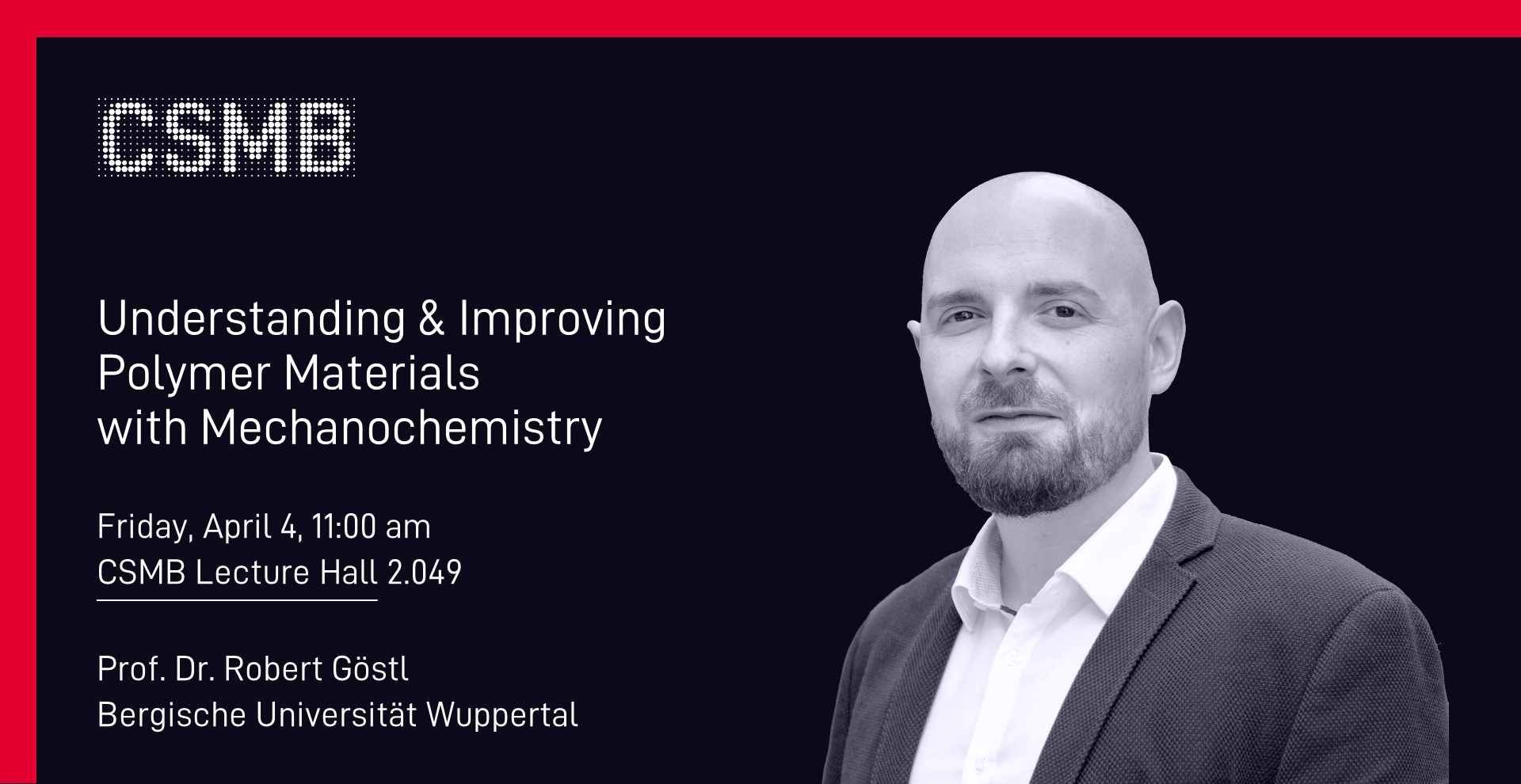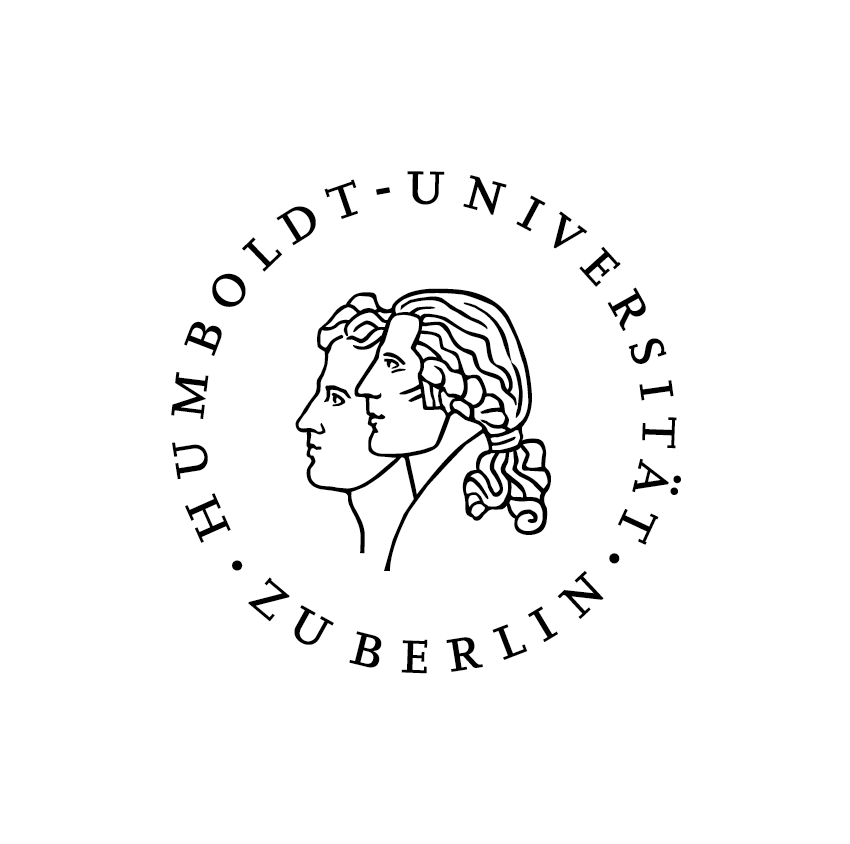
Understanding and Improving Polymer Materials with Mechanochemistry – Prof. Robert Göstl
We warmly welcome Prof. Dr. Robert Göstl, a distinguished expert in the field of mechanoresponsive (bio)materials.
He integrates responsive small molecules with macromolecules to develop novel materials and understand molecular-macroscopic relationships. His multidisciplinary approach, rooted in organic synthesis, expands into materials chemistry and physics to tackle fundamental challenges in material science.
Here at Humboldt-Universität zu Berlin, Robert Göstl studied chemistry, earning his diploma (2011) and doctorate (2014) on photochromism in Prof. Stefan Hecht’s group. After a postdoc in Eindhoven, he led a Junior Group at DWI. Since April 2024, he is W3 Professor for Sustainable Macromolecular Chemistry in Wuppertal.
Welcome back at HU!
Understanding and Improving Polymer Materials with Mechanochemistry
Prof. Dr. Robert Göstl
Bergische Universität Wuppertal & DWI – Leibniz-Institut für Interaktive Materialien Aachen
Abstract
One of the grand scientific questions of our time is how the remarkable properties of matter emerge from the complex correlations of their molecular constituents. We perform research adhering to this principle by following the results of mechanical stress and strain on macromolecular materials, which often requires to survey large samples with molecular level resolution due to the multiscale nature of force.
To do so, we firstly design and synthesize molecular optical force probes, and the respective macromolecular materials made from them in a transdisciplinary approach.[1] We mainly employ Diels-Alder adducts of π-extended anthracenes and maleimides reporting over covalent bond scission events due to their sensitive nature and facile tunability of their optical properties.[2,3]
Secondly, we use these mechanofluorophores to investigate the mechanical behavior of complex and non-uniform high-performance polymers, such as rubbers and composites, and soft matter, e.g., hydrogels and colloidal hydrogel networks, in detail developing novel methodologies. From these experiments, we aim to draw conclusions over the behavior of these materials under force.[4,5]
Eventually, we strive to use the insights gained from this to develop materials with improved mechanical properties by, e.g., introducing pathways to dissipate stresses at the locations where they are most critical or to self-reinforce by the activation of latent functional motifs to perform mechanically activated chemical reactions.[6,7]
References:
[1] S. He, M. Stratigaki, S. P. Centeno, A. Dreuw, R. Göstl, Chem. Eur. J. 2021, 27, 15889–15897.
[2] D. Yildiz, C. Baumann, A. Mikosch, A. J. C. Kuehne, A. Herrmann, R. Göstl, Angew. Chem. Int. Ed. 2019, 58, 12919–12923.
[3] C. Baumann, M. Stratigaki, S. P. Centeno, R. Göstl, Angew. Chem. Int. Ed. 2021, 60, 13287–13293.
[4] E. Izak-Nau, S. Braun, A. Pich, R. Göstl, Adv. Sci. 2022, 9, 2104004.
[5] S. He, S. Schog, Y. Chen, Y. Ji, S. Panitz, W. Richtering, R. Göstl, Adv. Mater. 2023, 35, 2305845.
[6] D. Campagna, R. Göstl, Angew. Chem. Int. Ed. 2022, 61, e202207557.
[7] S. Aydonat, D. Campagna, S. Kumar, S. Storch, T. Neudecker, R. Göstl, J. Am. Chem. Soc. 2024, 146, 32117–32123.
No entry fee, no registration necessary.
During the event, photo and video recordings might be made. The material will be used exclusively for the purpose of public relations at CSMB & HU Berlin.

